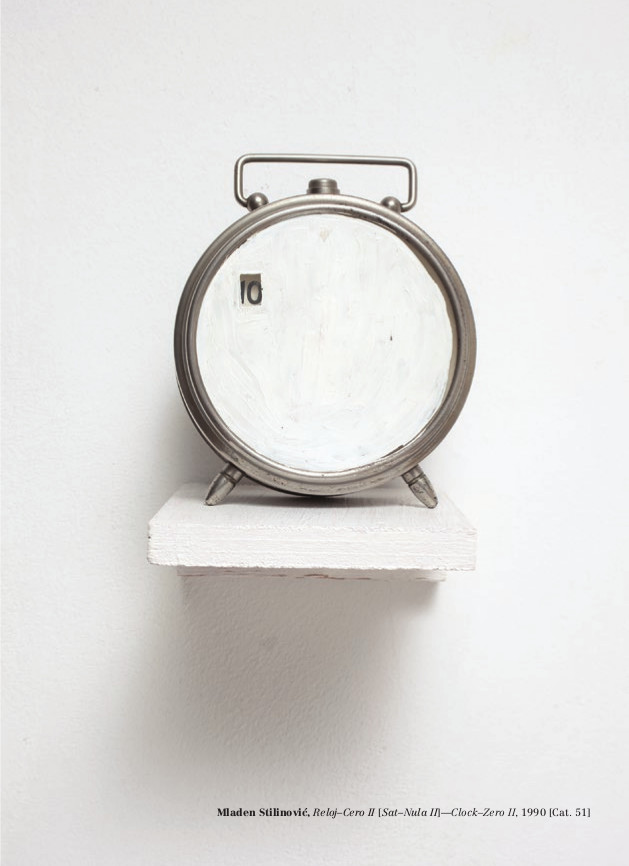Armin Medosch: New Tendencies: Art at the Threshold of the Information Revolution, 1961–1978 (2016)
Filed under book | Tags: · art history, computer art, conceptual art, cybernetics, neo-avant-garde, new art practice, new tendencies, non-aligned movement

“New Tendencies, a non-aligned modernist art movement, emerged in the early 1960s in the former Yugoslavia, a non-aligned country. It represented a new sensibility, rejecting both Abstract Expressionism and socialist realism in an attempt to formulate an art adequate to the age of advanced mass production. In this book, Armin Medosch examines the development of New Tendencies as a major international art movement in the context of social, political, and technological history. Doing so, he traces concurrent paradigm shifts: the change from Fordism (the political economy of mass production and consumption) to the information society, and the change from postwar modernism to dematerialized postmodern art practices.
Medosch explains that New Tendencies, rather than opposing the forces of technology as most artists and intellectuals of the time did, imagined the rapid advance of technology to be a springboard into a future beyond alienation and oppression. Works by New Tendencies cast the viewer as coproducer, abolishing the idea of artist as creative genius and replacing it with the notion of the visual researcher. In 1968 and 1969, the group actively turned to the computer as a medium of visual research, anticipating new media and digital art.
Medosch discusses modernization in then-Yugoslavia and other nations on the periphery; looks in detail at New Tendencies’ five major exhibitions in Zagreb (the capital of Croatia); and considers such topics as the group’s relation to science, the changing relationship of manual and intellectual labor, New Tendencies in the international art market, their engagement with computer art, and the group’s eventual eclipse by other “new art practices” including conceptualism, land art, and arte povera. Numerous illustrations document New Tendencies’ works and exhibitions.”
Based on 2012 dissertation from Goldsmiths, University of London.
Publisher MIT Press, 2016
Leonardo series
ISBN 9780262034166, 0262034166
x+395 pages
Reviews: Oliver Schürer (Versorgerin, 2016, DE), Paula Barreiro López (Critique d’art, 2016, FR), Kristian Lukić (Furtherfield, 2017), Tomáš Glanc (Tech & Culture, 2017), Adair Rounthwaite (Art Bulletin, 2018), Adair Rounthwaite (Art Bulletin, 2018), Ivana Bago (ARTMargins, 2019).
HTML
PDF (added on 2022-10-11)
Stano Filko: II., 1965–69. Tvorba. Works-Creations. Werk-Schaffung. Ouvrages (1970) [SK/EN/DE/FR]
Filed under catalogue | Tags: · art, conceptual art, environment, happening, installation art, neo-avant-garde

A catalogue documenting the happenings and environmental works of Slovak neo-avant-garde artist Stano Filko from the second half of the 1960s with the author’s handwritten notes.
With an introduction by Pierre Restany
Publisher A-Press, Bratislava, [1970]
[158] pages
via Slovak National Gallery (copy scanned from a private collection)
PDF (39 MB)
Comment (1)Mladen Stilinović: 1+2 ≡ (2015) [English/Spanish]
Filed under book, catalogue | Tags: · art, avant-garde, conceptual art, neo-avant-garde

Catalogue for an exhibition held from 5 September 2015 – 3 January 2016 at MUAC in Mexico City. The show comprising work dating from the 1970s up to the first decade of the 21st century included video, painting, collage, documentation of actions and installations, and aimed to demonstrate how Mladen Stilinović (1947-2016) questioned the aesthetic and social legacy of the avant-garde.
“His work comprises exercises that are frequently tautological, with citations that range from the aesthetic of the street to that of the Russian avant-garde, but always based on a dual axis that combines the formal simplicity with the deconstructive power of the absurd. The practice of this Croatian artist is governed by a specific question: ‘how to manipulate that which manipulates you’. Though he is considered a conceptual artist, the work of Stilinović is never cold nor rational, but moves in a register of humor and irony whose simple gestures appeal to the emotions and produce experiences that insist on personal responsibility. All his artistic strategies, starting with his auctioning off the color red, exchanging the definition of all the words in the dictionary for the word pain, or selling self-censorship, are connected—in the artist’s own words—with respecting the anarchy in himself and proposes the absurd as an antidote to ideology—whichever ideology is waiting for us around the next corner.”
Contains three texts by Mladen Stilinović, an interview by Branka Stipančić, essays by Alejandra Labastida and Boris Groys, and reproductions of selected works.
Publisher Museo Universitario Arte Contemporáneo (MUAC), Universidad Nacional Autónoma de México (UNAM), Mexico City, 2015
Folio MUAC series, 35
ISBN 607025175X, 9786070251757
95 pages

